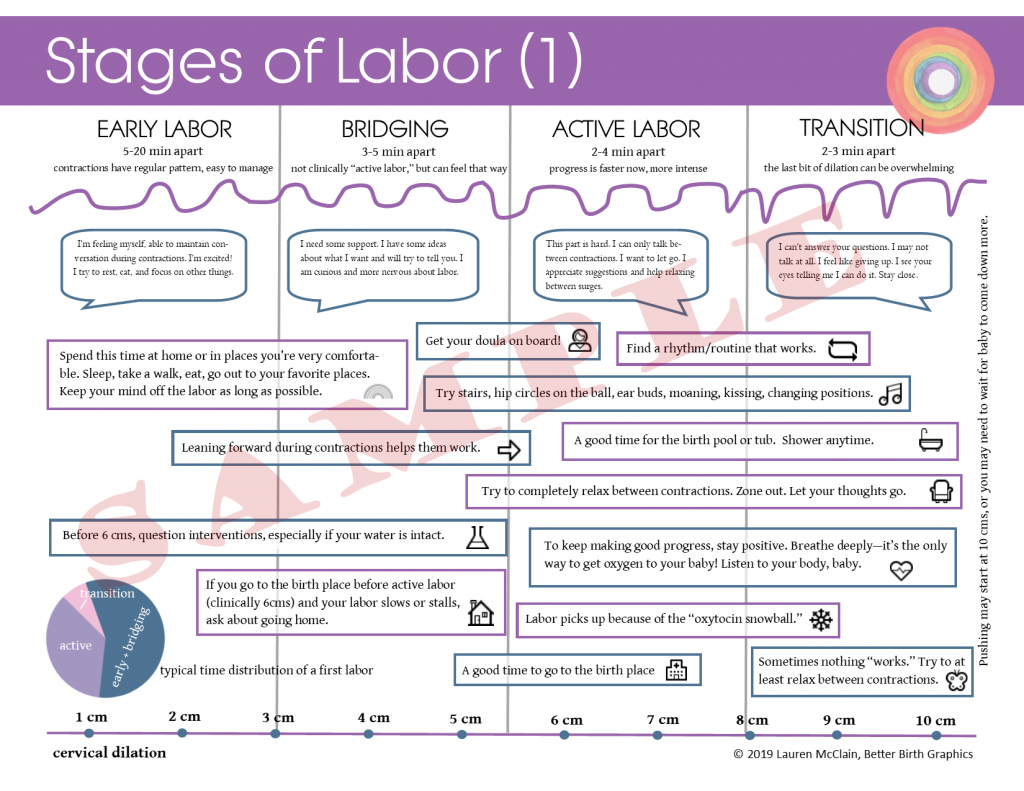Can’t do birth class or doula work without covering the stages of labor!
Here’s a handy stages of labor handout that details all the parts of stage one: dilation.
The stages of labor were definitely defined and named by a man. Getting to 10 centimeters feels like three or four distinct phases. I have here so named them: early labor, bridging, active labor, and transition.
It takes most of our effort to get to the pushing phase, so lets not just lump it all into one measly stage.
Early labor is best spend ignoring it, sleeping, eating, and relaxing. Maybe walking around, getting a chiropractic adjustment, or cuddling. It’s definitely too early to go to the birth place and probably too early for your doula.
Bridging is the phase I describe between early and active labor. Especially since ACOG changed what it means to be clinically in ‘active labor’ from four to six centimeters, people experience and intensity before their medically described active.
One of the most persistent questions we get in the birth education field is “when do we leave for the hospital or birth center?’ Having a handle on how labor progresses and what you can do as you move along help everyone stay calm and oxytocin-filled at home longer. Waiting to go to the hospital can mean the difference between and having a birth that matches your hopes and plans and having a birth fraught with intervention.
Active labor is the part that requires all our attention. When you’re experiencing strong contractions, it’s a good time to head to the birth place, call your doula, and get more serious about your relaxation, breathing, and movements.
Transition is often described as a wall. Everyone hits a wall at some point in labor. For some, it’s actually before transition, for some it’s not until pushing, but everyone hits a wall where they have to decide to keep going by letting go and falling through the wall. Transition is a time to use your intrinsic magic.
About a third of us experience a very strong transition, another third notice it’s more difficult, and the final third have no noticeable transition stage (the last few centimeters of dilation–or before switching to pushing).
After complete dilation, the cervix is about 10 centimeters, or fully pulled back around the baby’s head. No more cervix and it’s safe to push. But if the baby isn’t low in the pelvis, pushing is a waste of energy. Providers are encouraging waiting for the baby to ‘labor down,’ to descend further before we exert our precious energy pushing.
Pushing will be covered in another post for another stages of labor handout for stage two.
If you want to share this information with your clients, check out the stages of labor handout in the shop.






